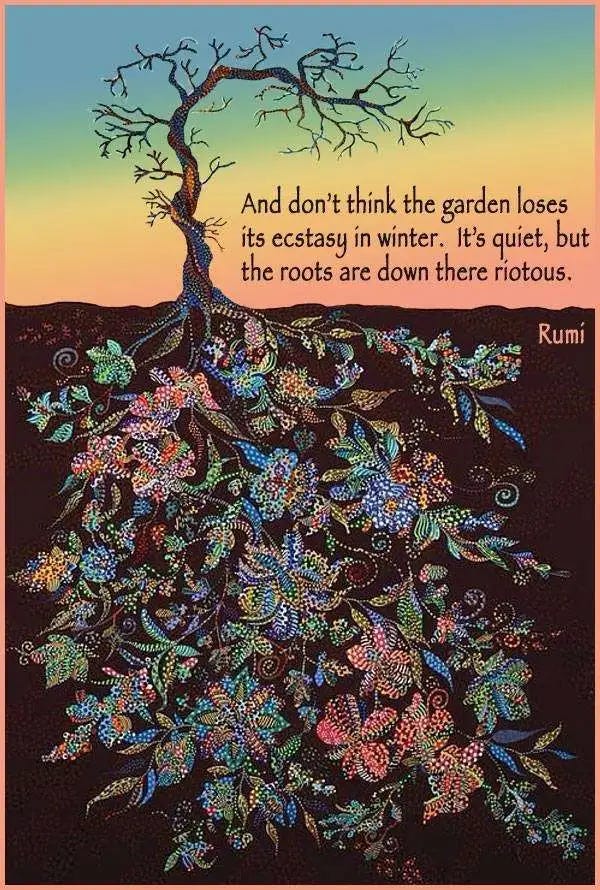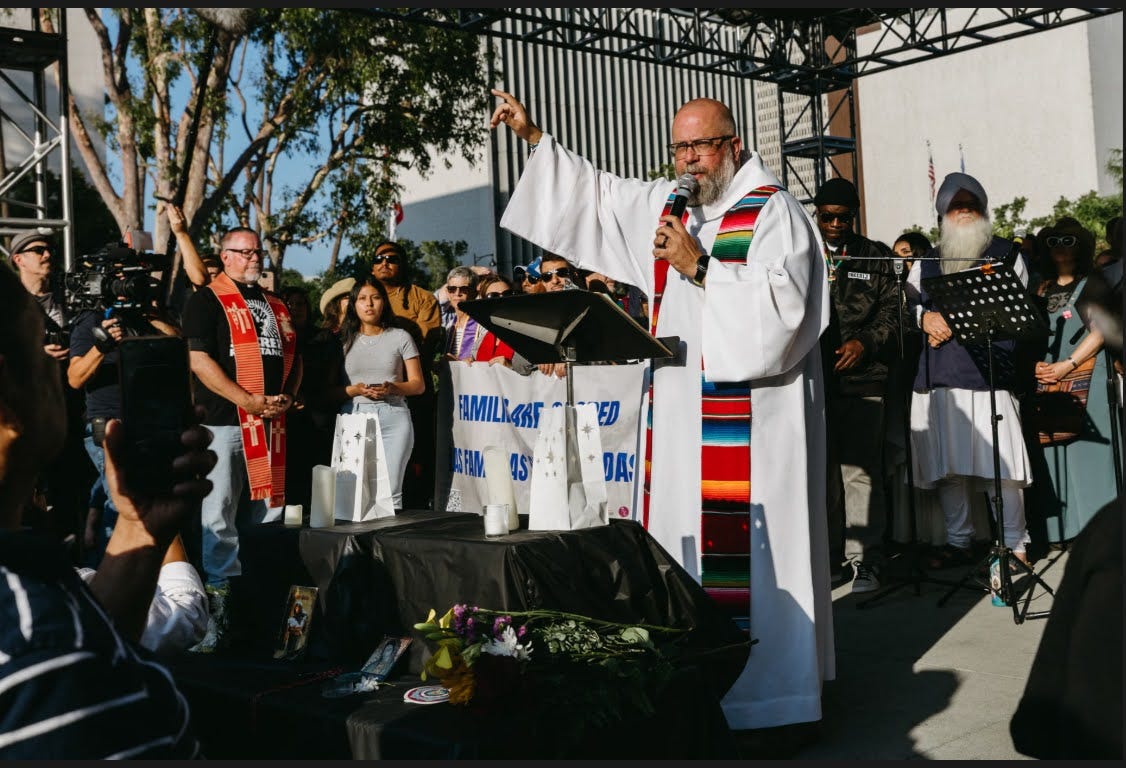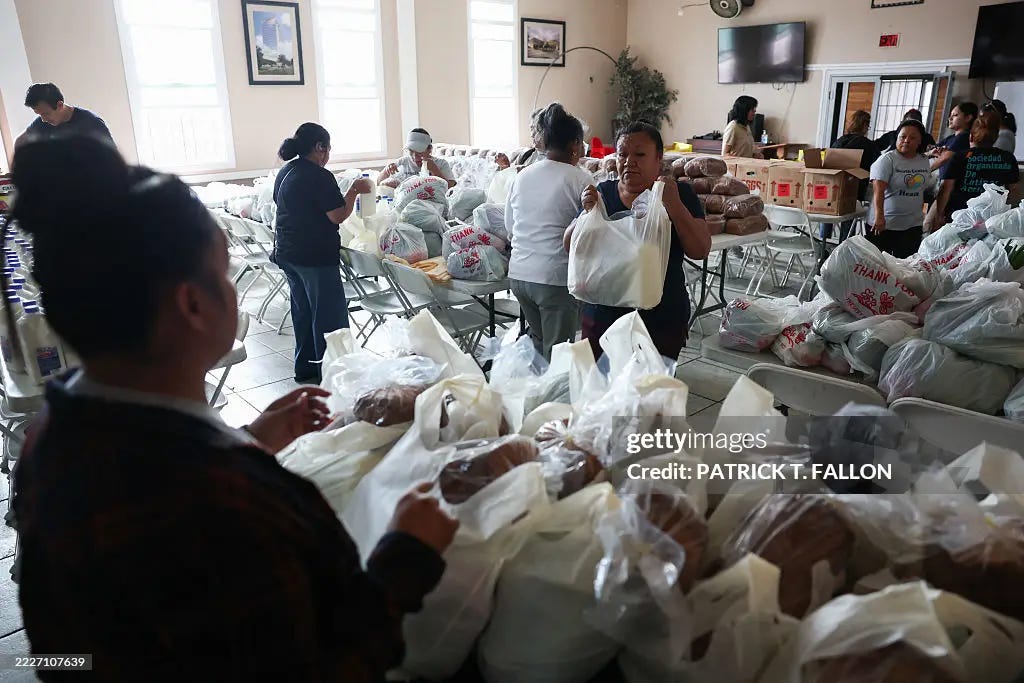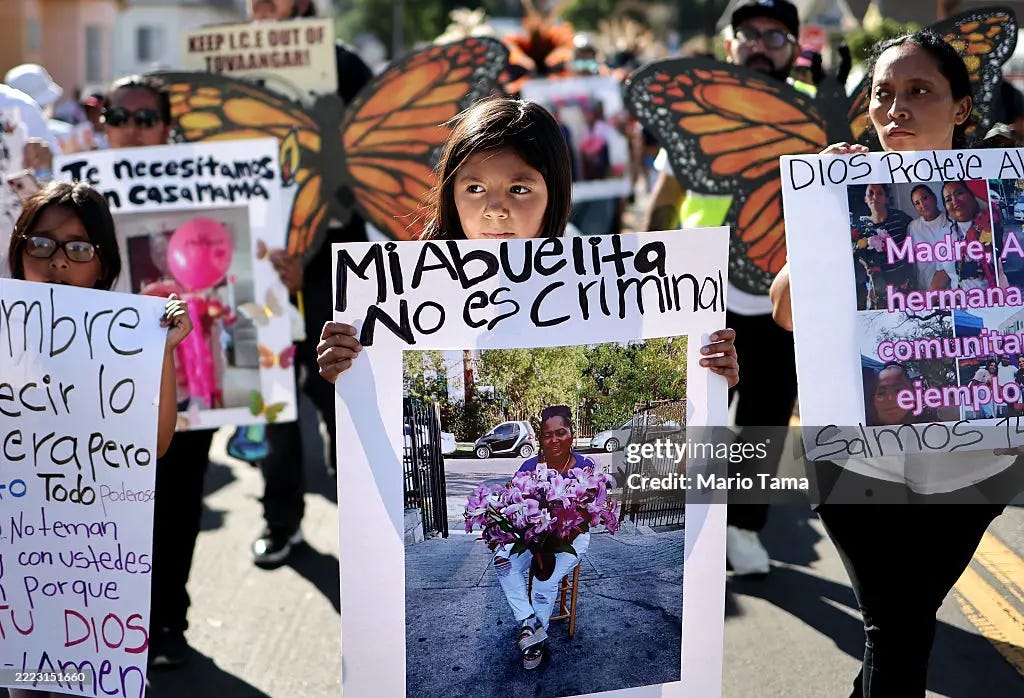The 13th century Muslim mystic Rumi once described a garden in winter: “Don’t think the garden loses its ecstasy in winter. It’s quiet, but the roots down there are riotous.” This image has stayed with me as I’ve watched our democratic institutions strain under unprecedented pressure while simultaneously glimpsing the determined roots of democratic renewal.
In a New Yorker podcast yesterday Hardy Merriman clarified that what we are undergoing in the US is “democratic backsliding.” This term describes the gradual weakening of democratic norms and institutions, as distinct from outright authoritarianism. In democratic backsliding, the basic structures of democracy remain in place (elections still happen, courts still function, media still operates), but they are systematically undermined from within by those in power.
The Trump administration is executing the most rapid erosion of democratic guardrails in modern American history. It’s a pattern that mirrors what has happened in Hungary, Poland, and other backsliding democracies. Trump has compressed into weeks what took other authoritarian leaders months. They’re moving on all fronts at once: firing inspectors general, attacking judges, threatening media outlets, and targeting law firms that oppose government policies.
Fortunately, our democratic institutions retain significant resilience, courts continue to issue rulings that constrain executive power, and civil society remains largely free to organize and resist. But the trajectory is concerning, as each norm that breaks makes the next erosion easier. If we’re not careful we’ll wind up where we’re headed.
But other things are also happening. While institutions buckle, some communities are discovering their own sources of strength. It’s difficult to see just how widespread this is. Media tends to look out from the political centers which obscures their vision (which is why you need to be reading publications like Waging Nonviolence).
Out here in the garden, well, the roots down here are riotous.
The Quiet Power of Faith in Action
Episcopal Bishop Maryann Budde’s sermon calling for mercy toward immigrants immediately drew death threats. Her response? To continue preaching while her fellow clergy organized solidarity actions across denominational lines. This exemplifies what faith communities have always known but secular democracy sometimes forgets: moral authority flows not from institutional position but from willingness to embody one’s deepest values under pressure.
In Los Angeles, faith leaders are literally positioning themselves between ICE agents and protesters, creating what one called “the parting of the Red Sea.” Rabbi Sharon Brous speaks of responding “to cruelty with courage, to hatred with love.” These aren’t empty platitudes but descriptions of concrete practices that shift the energy in contested spaces.
Civil resistance scholar Maria Stephan observes that when faith communities are involved in resistance they succeed because they bring six distinct “superpowers”:
moral authority,
organizational infrastructure,
unifying symbols and rituals,
mutual aid capacity,
bridge-building skills,
the power of organized noncooperation.
Stephan writes, “Faith communities are keepers of ancient wisdom and curators of sacred worship. They also are sources of prophetic nonviolent resistance and a place where we deepen the values for a world in which each person’s dignity is recognized, flourishing is encouraged, and we take responsibility for the thriving of others.”
Faith-rooted resistance operates differently than traditional activism. It begins not with analysis of external power structures but with cultivation of inner resolve. It asks not “How do we defeat them?” but “How do we remain faithful to what we love?”
Love as Political Practice
This shift in orientation creates unexpected possibilities. In Los Angeles, when 14-year-old Chris Garcia began running his mother’s tamale cart after ICE raids devastated her customer base, a former gang member Alex Murillo organized a fundraiser that drew lowrider car clubs, small business owners, and hundreds of neighbors who simply understood that caring for each other is not negotiable.
The Los Angeles mutual aid networks that have emerged around immigration enforcement demonstrate mutual aid at scale. Comunidades Indigenas en Liderazgo (CIELO) has delivered 1,200 grocery boxes to families afraid to leave home. The “adopt a corner” initiative trains volunteers to physically stand with day laborers at Home Depot parking lots. Over $200,000 in emergency assistance has flowed through community networks to families whose breadwinners were detained.
This pattern of creative resistance is spreading beyond the coasts. In Chicago, the Teachers Union negotiated sanctuary language directly into their contract, creating what union president Stacy Davis Gates calls “a mandate for training and resources” about immigrant rights. When federal agents appeared at Hamline Elementary School in January, the coordinated response revealed how institutional preparation enables effective resistance: security asked for warrants, administrators activated response teams, and teachers distributed know-your-rights flyers while walking students home safely.
Even where institutional protections don’t exist, individual moral conviction creates unexpected possibilities. In Lake County, Indiana - where state pressure forced local towns to overturn welcoming city ordinances - seventh-grade teacher Victoria Pliego-Poza says simply: “My goal is to protect my students. I’m prepared to take a bullet for them every day, so of course I’d be willing to get arrested.”
These efforts are not rooted in ideology but in what Buddhist teacher Thich Nhat Hanh called “interbeing” - the recognition that our wellbeing is inseparable from that of our neighbors.
When Institutions Fail, Communities Hold
The recent Jimmy Kimmel suspension and rapid reinstatement reveals how quickly organized pressure can work when we understand our collective power. Disney’s reversal wasn’t corporate conscience but strategic retreat in the face of coordinated consumer boycotts, worker solidarity from the Writers Guild, and immediate public backlash.
Authoritarian power depends upon institutional cooperation. But if that cooperation begins to fracture the pillars of support begin to weaken. The corporate media pillar, for instance, isn’t just executives prioritizing profits. It includes writers, technicians, consumers, and advertisers - ordinary people who can withdraw their cooperation when they see clearly enough.
This is where noncooperation becomes politically potent. The cultivation of clear seeing, the capacity to remain present under pressure, the ability to act from love rather than fear - these aren’t therapeutic luxuries but essential skills for effective resistance.
The Long View of Historical Change
You’re right to be alarmed by the speed of current democratic backsliding. Urgent action is needed.
But the deeper work of cultural transformation operates on geological time. The civil rights movement didn’t emerge overnight from legal strategy sessions. It grew from decades of Black churches cultivating spiritual practices that could sustain people through conflict while maintaining belief in the possibility of beloved community.
Similarly, the current flowering of mutual aid networks, interfaith coalitions, and community self-defense initiatives represents the early stages of what could become a profound renewal of American democracy - not just a return to previous norms but a needed evolution toward something more participatory, more grounded in relationship, more capable of holding complexity. We don’t just need a return to the pre-Trump era, we need an entirely different direction.
The real work of democracy was never about defeating particular leaders but about building alternative infrastructure. While authoritarians construct systems of exclusion and control, communities of faith and conscience build networks of care and mutual aid that can sustain democratic values regardless of who holds power. Politicians are like weather vanes - we must change the wind.
Signs of Renewal
The mutual aid networks spreading through Los Angeles. The interfaith coalitions mobilizing across denominational lines. The consumer boycotts that force corporate reversals within days. The young people spending their summers packing food boxes instead of scrolling social media. These are the small signs that a different kind of politics may emerge - one that can meet the challenges of our time not with matching force but with deeper roots.
Democratic backsliding is real and dangerous, but it’s not the only story being written. Some people are rediscovering what democracy looks like when it grows from the ground up.
The most powerful resistance to authoritarianism is creative - not just protecting what exists but imagining and building what could be.
The garden may appear quiet on the surface, but as Rumi reminds us, the roots below are riotous with life. Spring always comes, even after the darkest hour of winter.
References:
Carrier, McKenzie and Thomas Carothers. “U.S. Democratic Backsliding in Comparative Perspective.” Carnegie Endowment for International Peace, August 2025.
Merriman, Hardy. Interview. “Jimmy Kimmel and the Power of Public Pressure.” The New Yorker podcast, September 26, 2025.
Stephan, Maria. “Faith and the Authoritarian Playbook”, Sojourners, July 2024
Stephan, Maria J. “The 6 superpowers that faith communities bring to nonviolent struggle.” Waging Nonviolence, September 11, 2025.
Valenzuela, Victoria. “How LA is uniting to provide mutual aid for those impacted by ICE raids.” Waging Nonviolence, August 22, 2025.
Worthy, Joe. “Jimmy Kimmel’s reinstatement shows the power of noncooperation.” Waging Nonviolence, September 23, 2025.
U.S. News & World Report. “US Faith Leaders Opposed to ICE Raids Counsel Nonviolent Resistance and Lead by Example.” June 12, 2025.




